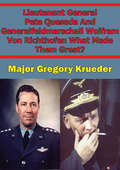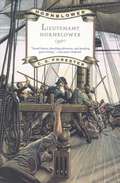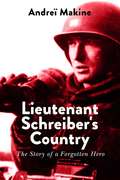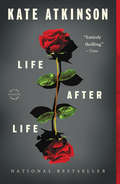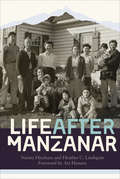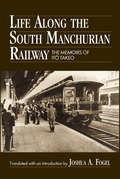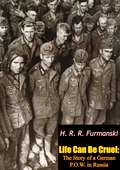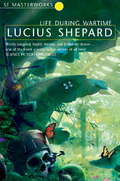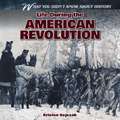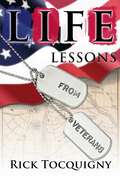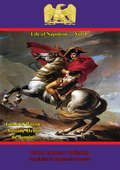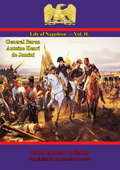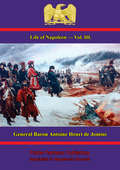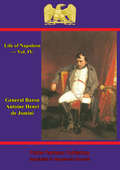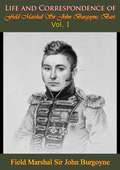- Table View
- List View
Lieutenant General Pete Quesada And Generalfeldmarschall Wolfram Von Richthofen What Made Them Great?
by Major Jeremy KreuderDuring World War II, certain air force generals demonstrated an uncommon ability to succeed on the battlefield in spite of considerable obstacles. Whether solving operational issues, developing technical innovations, or devising logistic solutions, these commanders transcended service-centric doctrine and loyalties in order to achieve their objectives. Are there common elements among their personal background, professional education, officer development, and operational experience that helps explain their success? This paper will examine two contemporary tactical airpower commanders, Lieutenant General Elwood "Pete" Quesada and Generalfeldmarschall Wolfram Freiherr Von Richthofen, in an attempt to answer this important question.This study comprises an analysis of two contemporary tactical airpower commanders from World War II, Lieutenant General Elwood "Pete" Quesada and Generalfeldmarschall Wolfram Freiherr Von Richthofen. It attempts to determine how they succeeded where others failed. Whether solving operational issues, developing technical innovations, or devising logistic solutions, these commanders transcended service-centric doctrine and loyalties in order to achieve their objectives. The author searches for common elements among their personal background, professional education, officer development, and operational experience that help explain their uncommon triumphs. The analysis includes both external and internal factors to determine which is dominant. The final section includes five recommendations intended for those who conduct officer accession, professional development, and promotion boards. The ultimate objective is to provide timeless criteria that transcend technological advancements and the changing character of war.
Lieutenant Hornblower (The Hornblower Saga, Book #7)
by C. S. ForesterWith interest in nautical adventure stories reaching unprecedented heights -- as evidenced by the success of "The Perfect Storm", Patrick O'Brian's bestselling Aubrey/Maturin novels, the Titanic phenomenon, etc. -- now is the ideal time for readers to rediscover the pleasures and excitement of C. S. Forester's epic saga of turmoil and triumph on the high seas. "The Horatio Hornblower" novels, which recount the thrilling adventures of one of the most daring and resourceful officers in the Royal Navy as he wrestles with his own "accursed unhappy temperament" and as he sails valiantly into battle after battle against Napoleon's forces, have riveted and delighted millions of readers since the series was initiated in 1938.
Lieutenant Schreiber's Country: The Story of a Forgotten Hero
by Andrei MakineJean-Claude Servan-Schreiber enlisted in the French army at the outset of World War II and quickly rose to the rank of lieutenant. Despite his patriotism and courage in defending his country, in which he narrowly escaped death several times, he suffered the bigotry of his fellow soldiers until he was expelled from the army for being Jewish. He sought exile in Spain and was deported and interned in a concentration camp before he managed to join the Allied army in North Africa. He eventually participated in the triumphant liberation of his homeland.His story, almost forgotten, would have remained unknown if not for the efforts of the award-winning and internationally bestselling author Andrei Makine, Retelling Servan-Schreiber's dramatic life with a novelist's skill, he reveals a man who embraced experience in all its joys and sorrows, who knew the pleasures of love amid the savagery of war, and who could forgive the hatred he was subjected to but never forget it. In Servan-Schreiber, who is now nearly a centenarian, Makine celebrates virtues that every citizen should be reminded of: self-sacrifice, honor, love of country, and true heroism.
Life After Life: A Novel
by Kate AtkinsonWhat if you could live again and again, until you got it right? On a cold and snowy night in 1910, Ursula Todd is born to an English banker and his wife. She dies before she can draw her first breath. On that same cold and snowy night, Ursula Todd is born, lets out a lusty wail, and embarks upon a life that will be, to say the least, unusual. For as she grows, she also dies, repeatedly, in a variety of ways, while the young century marches on towards its second cataclysmic world war. Does Ursula's apparently infinite number of lives give her the power to save the world from its inevitable destiny? And if she can -- will she?Darkly comic, startlingly poignant, and utterly original -- this is Kate Atkinson at her absolute best.
Life After Manzanar
by Naomi Hirahara Heather LindquistFrom the editor of the award-winning Children of Manzanar, Heather C. Lindquist, and Edgar Award winner Naomi Hirahara comes a nuanced account of the “Resettlement”: the relatively unexamined period when ordinary people of Japanese ancestry, having been unjustly imprisoned during World War II, were finally released from custody. Given twenty-five dollars and a one-way bus ticket to make a new life, some ventured east to Denver and Chicago to start over, while others returned to Southern California only to face discrimination and an alarming scarcity of housing and jobs. Hirahara and Lindquist weave new and archival oral histories into an engaging narrative that illuminates the lives of former internees in the postwar era, both in struggle and unlikely triumph. Readers will appreciate the painstaking efforts that rebuilding required, and will feel inspired by the activism that led to redress and restitution—and that built a community that even now speaks out against other racist agendas. Published in collaboration with Manzanar History Association
Life Along the South Manchurian Railroad
by Joshua A. Fogel Ito TakeoAs part of a worldwide movement, nations and multinational groups are trying to reach closure regarding past atrocites and inhumanites, including what happened in Nanking in 1937. The contributors to this book show that these activites are a search for the common causes of human atrocites.
Life Can Be Cruel: The Story of a German P.O.W. in Russia
by H. R. R. FurmanskiOriginally published in 1960, this compact book tells the true story of a German soldier: from his early childhood during the First World War, through to his harrowing experiences on the frontline during the Word War II, culminating in his capture by the Red Army on 20 December 1942…An astonishing first-hand account.
Life During Wartime
by Lucius ShepardIn Guatemala, David is slugging it out the rotting vegetation and his despairing foot soldiers. Beyond the warzone, he meets Debora, who may be working for the enemy, and stumbles into a deadly psychic conflict where the mind is the greatest weapon.
Life During Wartime (S.F. MASTERWORKS)
by Lucius ShepardIn the jungles of Guatemala, David Mingolla is struggling to survive amongst the rotting vegetation and his despairing fellow foot soldiers. He knows he is nothing but an expendable pawn in an endless war. On R & R a few miles away from the warzone he meets Debora - an enigmatic young woman who may be working for the enemy - and stumbles into a deadly psychic conflict where the mind is the greatest weapon.
Life During the American Revolution (What You Didn't Know About History)
by Kristen RajczakThe American Revolution was full of odd events not usually included in history books. Some of these events include: the tar and feathering of British supporters and battles taking place in farmers fields. Readers will find many new and sometimes funny facts in this book, such as patriot soldiers leaving the war to harvest their crops. Surprising fact boxes and distinctive historical information engage readers with a unique look at the Revolutionary War.
Life Form
by Alan Dean FosterWhen a team of scientists starts to investigate the flora and fauna of the distant planet of Xica, it soon becomes apparent that this is a unique opportunity to study alien life forms. The planet offers a rich and varied eco-system and each of the scientists recognises what this could mean for their individual reputations.And then, their dreams come true - they establish first contact with a humanoid civilization.But this is a planet where nature breaks all the rules, where logic falls apart, and where nothing is as it seems. And their dreams turn into a nightmare.
Life Form
by Amélie NothombA fictional correspondence with a desperate American soldier leads to a strange new reality in this surreal novel of trauma, healing, and war.One morning, the heroine of this book—a famous Belgian author named Amélie Nothomb—receives an unusual fan letter. Melvin Mapple, an American soldier stationed in Iraq, tells her of the horrors around him. And of his only comfort, eating. He eats and eats until his ever-growing bulk starts to suffocate him. Disgusted with himself, but unable to stop, he labels his excess self Scheherazade as a way to cope.Repulsed yet fascinated by Mapple’s story, Nothomb begins exchanging letters with him. She opens up about her artistic process and the challenges of being in the spotlight. Their far-reaching conversation delves into universal questions about humanity and relationships. But their epistolary friendship takes a surprising turn when the novelist discovers bizarre facts lurking behind Mapple’s complex personal story.
Life Hacks for Military Spouses: Advice, Wit, and Humor from Those Who Served Behind the Scenes
by Tracey Enerson Wood Allison Wood Kristen RiffleA colorful collection of tips and tricks for getting the most out of the nomadic military lifestyle. Told through humorous anecdotes by those with years of unique experiences, these life hacks reveal a special culture with expectations and numerous obstacles to be faced along the way. Military life boasts of travel to exotic places, immersion in the worldly cultures, and cuisine that most Americans can only dream about . . . and on the government&’s dime, to boot! At least, that&’s what the common perception is. But those who have served know that while the above may be true, military life comes with its own set of challenges and can be a hardship as much as it is rewarding. Here to help is the advice, guidance, and personal stories of spouses from all walks of life, in stages from the newlywed to the retired and properly salty. They share tips on overcoming the numerous obstacles, and navigating the special culture, traditions, and the one-of-a-kind lingo of military service. Gathered mostly from those who are affiliated with the military, but also from those with similar diplomatic lifestyles, the anecdotes reveal the special bond they share with their fellow spouses, and the wisdom gained to pass to the next generation.The very special illustrations were created by a talented Air Force wife, and reflect both the strong beauty and earnestness of those who are engaged in our nation&’s most serious business, and yet, have learned not take themselves too seriously.
Life Lessons from Veterans
by Rick TocquignyLessons from Veterans provides an array of personal stories—from nightmarish fights on the islands of Iwo Jima to the shores of Normandy on D-Day. With unprecedented access to veterans and unpublished memoirs, Life Lessons from Veterans provides a new voice to the bravery and sacrifice of the American soldier defending our freedom through more than thirty stories.
Life Of Napoleon — Vol. I. (Life Of Napoleon #1)
by General Baron Antoine Henri de Jomini General H. W. HalleckThe life of Napoleon is etched still across the history of Europe, in the wars he waged, the dynasties that he toppled, and the laws he enacted. Even in an epoch rich in social change, from the bottom up he remains a fascinating figure; biographers face the challenge of doing justice to such a multi-faceted character. Few can have been said to have access to the Emperor as much as the generals that served under him throughout his many campaigns; General Jomini spent many year serving the Emperor and many more in the company of some of his enemies putting him in an excellent position to write his biography. Written as if by Napoleon himself, Jomini traces Napoleon's political and military successes and failures, weaving them into a seamless narrative that makes his work one of the few rounded biographies of Napoleon.This first volume covers Napoleon's early years from birth in Ajaccio in Corsica to his ascent to the Consulship and the peace of Amiens in 1802.Of the Author -- General Jomini saw much service during the Napoleonic Wars, initially working in staff positions for Marshal Ney prior to being attached to the Emperor's own headquarters during the 1806 and 1807 campaigns. He was pushed out of the Grande Armée into the arms of the Russian service in 1813, becoming aide-de-camp to the Tzar. He was famous for his copious output of works on the military theory and strategy employed during the French Revolution, the Napoleonic Wars, and even those of Frederick the Great. He is often remembered for his chef d'œuvre, the "Art of War", and has been dubbed the "founder of modern strategy" by historian John Shy.Author -- General Baron Antoine Henri de Jomini (1779-1869)Translator -- General H. W. Halleck (1815-1872
Life Of Napoleon — Vol. II. (Life Of Napoleon #2)
by General Baron Antoine Henri de Jomini General H. W. HalleckThe life of Napoleon is etched still across the history of Europe, in the wars he waged, the dynasties that he toppled, and the laws he enacted. Even in an epoch rich in social change, from the bottom up he remains a fascinating figure; biographers face the challenge of doing justice to such a multi-faceted character. Few can have been said to have access to the Emperor as much as the generals that served under him throughout his many campaigns; General Jomini spent many year serving the Emperor and many more in the company of some of his enemies putting him in an excellent position to write his biography. Written as if by Napoleon himself, Jomini traces Napoleon's political and military successes and failures, weaving them into a seamless narrative that makes his work one of the few rounded biographies of Napoleon.This second volume covers the campaigns of Austerlitz, Jena, Eylau and Friedland and the beginnings of the Peninsular War.Of the Author -- General Jomini saw much service during the Napoleonic Wars, initially working in staff positions for Marshal Ney prior to being attached to the Emperor's own headquarters during the 1806 and 1807 campaigns. He was pushed out of the Grande Armée into the arms of the Russian service in 1813, becoming aide-de-camp to the Tzar. He was famous for his copious output of works on the military theory and strategy employed during the French Revolution, the Napoleonic Wars, and even those of Frederick the Great. He is often remembered for his chef d'œuvre, the "Art of War", and has been dubbed the "founder of modern strategy" by historian John Shy.Author -- General Baron Antoine Henri de Jomini (1779-1869)Translator -- General H. W. Halleck (1815-1872)
Life Of Napoleon — Vol. III. (Life Of Napoleon #3)
by General Baron Antoine Henri de Jomini General H. W. HalleckThe life of Napoleon is etched still across the history of Europe, in the wars he waged, the dynasties that he toppled, and the laws he enacted. Even in an epoch rich in social change, from the bottom up he remains a fascinating figure; biographers face the challenge of doing justice to such a multi-faceted character. Few can have been said to have access to the Emperor as much as the generals that served under him throughout his many campaigns; General Jomini spent many year serving the Emperor and many more in the company of some of his enemies putting him in an excellent position to write his biography. Written as if by Napoleon himself, Jomini traces Napoleon's political and military successes and failures, weaving them into a seamless narrative that makes his work one of the few rounded biographies of Napoleon.This third volume covers the campaigns of Wagram, the continuing Spanish Ulcer and the beginnings of the Russian campaign in 1812.Of the Author -- General Jomini saw much service during the Napoleonic Wars, initially working in staff positions for Marshal Ney prior to being attached to the Emperor's own headquarters during the 1806 and 1807 campaigns. He was pushed out of the Grande Armée into the arms of the Russian service in 1813, becoming aide-de-camp to the Tzar. He was famous for his copious output of works on the military theory and strategy employed during the French Revolution, the Napoleonic Wars, and even those of Frederick the Great. He is often remembered for his chef d'œuvre, the "Art of War", and has been dubbed the "founder of modern strategy" by historian John Shy.Author -- General Baron Antoine Henri de Jomini (1779-1869)Translator -- General H. W. Halleck (1815-1872)
Life Of Napoleon — Vol. IV. (Life Of Napoleon #4)
by General Baron Antoine Henri de Jomini General H. W. HalleckThe life of Napoleon is etched still across the history of Europe, in the wars he waged, the dynasties that he toppled, and the laws he enacted. Even in an epoch rich in social change, from the bottom up he remains a fascinating figure; biographers face the challenge of doing justice to such a multi-faceted character. Few can have been said to have access to the Emperor as much as the generals that served under him throughout his many campaigns; General Jomini spent many year serving the Emperor and many more in the company of some of his enemies putting him in an excellent position to write his biography. Written as if by Napoleon himself, Jomini traces Napoleon's political and military successes and failures, weaving them into a seamless narrative that makes his work one of the few rounded biographies of Napoleon.This fourth volume covers the disastrous effects of the Russian campaign, the fight in Germany of 1813, his downfall in 1814 and his final defeat at Waterloo.Of the Author -- General Jomini saw much service during the Napoleonic Wars, initially working in staff positions for Marshal Ney prior to being attached to the Emperor's own headquarters during the 1806 and 1807 campaigns. He was pushed out of the Grande Armée into the arms of the Russian service in 1813, becoming aide-de-camp to the Tzar. He was famous for his copious output of works on the military theory and strategy employed during the French Revolution, the Napoleonic Wars, and even those of Frederick the Great. He is often remembered for his chef d'œuvre, the "Art of War", and has been dubbed the "founder of modern strategy" by historian John Shy.Author -- General Baron Antoine Henri de Jomini (1779-1869)Translator -- General H. W. Halleck (1815-1872)
Life Sciences and Related Fields
by International Union of Biochemistry Molecular BiologyDuring the last decade, national and international scientific organizations have become increasingly engaged in considering how to respond to the biosecurity implications of developments in the life sciences and in assessing trends in science and technology (S&T) relevant to biological and chemical weapons nonproliferation. The latest example is an international workshop, Trends in Science and Technology Relevant to the Biological Weapons Convention, held October 31 - November 3, 2010 at the Institute of Biophysics of the Chinese Academy of Sciences in Beijing. Life Sciences and Related Fields summarizes the workshop, plenary, and breakout discussion sessions held during this convention. Given the immense diversity of current research and development, the report is only able to provide an overview of the areas of science and technology the committee believes are potentially relevant to the future of the Biological and Toxic Weapons Convention (BWC), although there is an effort to identify areas that seemed particularly ripe for further exploration and analysis. The report offers findings and conclusions organized around three fundamental and frequently cited trends in S&T that affect the scope and operation of the convention: The rapid pace of change in the life sciences and related fields; The increasing diffusion of life sciences research capacity and its applications, both internationally and beyond traditional research institutions; and The extent to which additional scientific and technical disciplines beyond biology are increasingly involved in life sciences research. The report does not make recommendations about policy options to respond to the implications of the identified trends. The choice of such responses rests with the 164 States Parties to the Convention, who must take into account multiple factors beyond the project's focus on the state of the science.
Life Undercover: Coming of Age in the CIA
by Amaryllis Fox“Fast and thrilling . . . Life Undercover reads as if a John le Carré character landed in Eat Pray Love." —The New York Times <P><P>Amaryllis Fox's riveting memoir tells the story of her ten years in the most elite clandestine ops unit of the CIA, hunting the world's most dangerous terrorists in sixteen countries while marrying and giving birth to a daughter <P><P>Amaryllis Fox was in her last year as an undergraduate at Oxford studying theology and international law when her writing mentor Daniel Pearl was captured and beheaded. <P><P>Galvanized by this brutality, Fox applied to a master's program in conflict and terrorism at Georgetown's School of Foreign Service, where she created an algorithm that predicted, with uncanny certainty, the likelihood of a terrorist cell arising in any village around the world. <P><P>At twenty-one, she was recruited by the CIA. Her first assignment was reading and analyzing hundreds of classified cables a day from foreign governments and synthesizing them into daily briefs for the president. Her next assignment was at the Iraq desk in the Counterterrorism center. At twenty-two, she was fast-tracked into advanced operations training, sent from Langley to "the Farm," where she lived for six months in a simulated world learning how to use a Glock, how to get out of flexicuffs while locked in the trunk of a car, how to withstand torture, and the best ways to commit suicide in case of captivity. <P><P> At the end of this training she was deployed as a spy under non-official cover--the most difficult and coveted job in the field as an art dealer specializing in tribal and indigenous art and sent to infiltrate terrorist networks in remote areas of the Middle East and Asia. <P><P>Life Undercover is exhilarating, intimate, fiercely intelligent--an impossible to put down record of an extraordinary life, and of Amaryllis Fox's astonishing courage and passion. <P><P><b>A New York Times Bestseller</b>
Life Undercover: Coming of Age in the CIA
by Amaryllis FoxAmaryllis Fox's riveting memoir tells the story of her ten years in the most elite clandestine ops unit of the CIA, hunting the world's most dangerous terrorists in sixteen countries while falling in love and giving birth to a daughter.Amaryllis Fox was in her last year as an undergraduate at Oxford studying ancient languages and theoretical physics when her writing mentor, Daniel Pearl, was captured and beheaded. Galvanized by this brutality, she applied to a Master's program in conflict and terrorism at Georgetown's School of Foreign Service, where she created an algorithm that predicted, with uncanny certainty, the likelihood of a terrorist cell arising in any village around the world. At 21, she was recruited by the CIA. Her first assignment was reading and analyzing hundreds of classified cables a day from foreign governments and synthesizing them into daily briefs for the President. Her next assignment was at the Iraq desk in the Counterterrorism center. At 22, she was fast-tracked into advanced operations training, sent from Langley to "the Farm," where she lived for six months in a simulated world learning how to use a glock, how to get out of flexicuffs while locked in the trunk of a car, how to withstand torture, and the best ways to commit suicide in case of captivity. At the end of this training she was deployed as a spy under non-official cover--the most difficult and coveted job in the field--as an art dealer specializing in tribal and Indigenous art, and sent to infiltrate terrorist networks in remote areas of the Middle East and Asia. Life Undercover is exhilarating, intimate, fiercely intelligent--an impossible-to-put-down record of an extraordinary life, and of Amaryllis Fox's astonishing courage and passion.
Life and Adventures of L D Lafferty: Being A True Biography of One of the Most Remarkable Men of the Great Southwest
by A. H. AbneyThe story chronicles the escapades of Lafferty through the Louisiana, Missouri and Arkansas Territories, the lands of the Old Settler Cherokees, and into the new frontier of Texas."L. D. Lafferty has been described as a rough ashlar of reckless daring and thoughtless intrepidity and a youthful adventurer who had fought Indians at the age of 15." - We Never Retreat: Filibustering Expeditions into Spanish Texas (2015)"L. D. Lafferty, a contemporary of Lafitte's, recalled that Lafitte frankly confessed that he had enough silver and gold on the island to freight a ship." -Mysteries and Legends of Texas (2010)"Lorenzo Dow Lafferty, son of a Tennessee Indian trader who followed the Cherokees to Arkansas in 1810, spent three of his teenage years (1815-1818) living in a Cherokee town on the White River." -The Arkansas Historical Quarterly (1997)
Life and Adventures of the Celebrated Bandit Joaquin Murrieta, His Exploits in the State of California
by Ireneo PazDelve into the legendary tale of one of California's most infamous figures with Ireneo Paz's Life and Adventures of the Celebrated Bandit Joaquin Murrieta: His Exploits in the State of California. This riveting narrative brings to life the story of Joaquin Murrieta, a Mexican bandit whose name became synonymous with rebellion and justice during the tumultuous Gold Rush era.Ireneo Paz, a masterful storyteller, combines meticulous research with vibrant prose to paint a comprehensive portrait of Murrieta's life. From his humble beginnings to his rise as a feared and admired outlaw, the book explores the socio-political landscape of mid-19th century California, marked by racial tensions, economic upheaval, and the quest for fortune.Through detailed accounts of Murrieta's daring escapades, readers will be captivated by the daring heists, narrow escapes, and the relentless pursuit by law enforcement. Paz delves into the motivations behind Murrieta's transformation from a victim of injustice to a symbol of resistance, capturing the complexities of his character and the era he lived in.Life and Adventures of the Celebrated Bandit Joaquin Murrieta is not just a tale of crime and retribution; it is a poignant exploration of identity, resilience, and the human spirit. Paz's vivid descriptions and compelling storytelling offer a window into the cultural and historical context that shaped Murrieta's legend, making this book an essential read for history enthusiasts, adventure seekers, and anyone fascinated by the rich tapestry of California's past.Join the adventure and uncover the truth behind the myth of Joaquin Murrieta, a man whose legacy continues to intrigue and inspire.
Life and Correspondence of Field Marshal Sir John Burgoyne, Bart. — Vol. I (Life and Correspondence of Field Marshal Sir John Burgoyne, Bart. #1)
by George Wrottesley R.E. Field Marshal Sir John Burgoyne Bart.This ebook is purpose built and is proof-read and re-type set from the original to provide an outstanding experience of reflowing text for an ebook reader. Sir John Fox Burgoyne, illegitimate child of General John Burgoyne, started life with few prospects of greatness but ended his life as a hugely respected Field Marshal of the British army; his funeral in 1871 was attended by no less than "Her Majesty the Queen, H.R.H. the Prince of Wales, H.R.H. the Duke of Edinburgh, H.R.H. Prince Arthur, His Majesty the King of the Belgians... Among the British Officers assembled, were two Field-Marshals, ten full Generals, of whom seven wore the insignia of Grand Cross of the Bath, three Lieut.-Generals, fifteen Major-Generals, including Prince Edward of Saxe Weimar..." Destined for a military career from birth, he was commissioned into the Royal Engineers on 29th August 1798. At the time the Royal Engineers were a small body of men with specialized knowledge, primarily commissioned officers with few enlisted men - even a new Lieutenant was a person of consequence due to his rarity and skills, and the paucity of advancement that relied purely on seniority of service. He did not have to wait long before being flung into action during the blockade of Malta and then the invasion of Denmark. However, the majority of this book consists of letters and journal entries of his experiences during the Peninsular War. As one of the few engineers with the Duke's army, he was given important assignments during the sieges that dominated the movements of the Allied forces; his notes are all the more important for their commentary of the siege operations such as Badajoz and Ciudad Rodrigo that were undertaken from his expert knowledge. Notwithstanding the high casualty rates amongst the Engineers, Sir John survived the War to be employed on the disastrous expedition to New Orleans in 1814. His post-Napoleonic career was stunted by lack of potential advancement, so much so that he became involved in civil engineering and work on fortifications. He was posted to Ireland where he endeavoured to improve the conditions of the poor, particularly straining all his influence during the disastrous potato famine. Whilst doing this he was also a frequent correspondent with the military establishment over improvements and clashed with the indifference of politicians and their budgets. The first volume ends with the beginnings of the tension with Russia and his coming employment in the Crimea. Title - Life and Correspondence of Field Marshal Sir John Burgoyne, Bart. -- Vol. I Series Name - Life and Correspondence of Field Marshal Sir John Burgoyne, Bart. Series Number -- I Author -- Field Marshal Sir John Burgoyne, Bart.(1782-1871) Editor -- Lieut.-Colonel the Hon. George Wrottesley (R.E.) (1827-1909) Text taken, whole and complete, from the edition published in 1873, London, by Richard Bentley. Original - 506 pages. Illustrations - one portrait.
